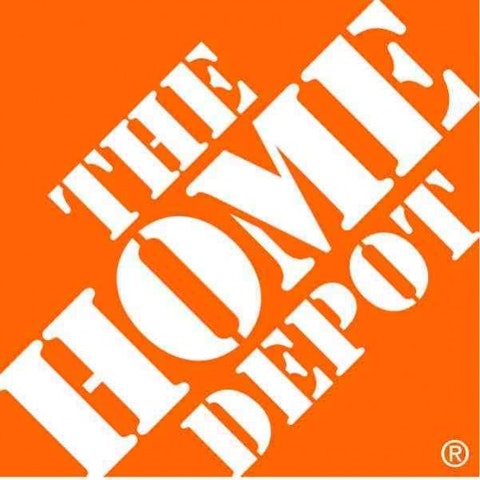Is Home Depot A Good Investment? The fourth of July is coming up, and I was wondering whether there were any “all-American” buys to be had. With a recovering home market and improving economic indicators, Home Depot (HD) is still the go-to for home improvement supplies and equipment in the United States. The company reported $70 billion in sales for the 2011 fiscal year, and management at the Depot is steadily raising its ambitions for the company. That said, the company’s valuation story has no true consensus: Trefis, for instance, has posted two articles, one indicating a $55 price point, and another from earlier this year indicating that the Home Depot shares are worth no more than $40.
I take a middle ground, recommending Home Depot shares as a 3-year investment. Shares will likely settle at around $56, but I wouldn’t expect much more of an upside. Home Depot shares require some patience–they are trading at some of their highest prices in over a decade. Additionally, the housing market will recover, but slowly. With low interest rates and the aging of many houses in the United States, home remodelling is becoming more economically feasible and, for many Baby Boomers, necessary. The total amount spent on home improvement in the United States increased in 2011 to $270 billion, from $260 billion in 2010.
Valuation
Home Depot shares are currently trading at a premium based on several multiples. However, I do not think this indicates an overvaluation but, instead, investor confidence that Home Depot will make a steady recovery from the recent slowdown in the housing market. Shares are trading with a forward P/E of about 17.5, while Lowe’s (NYSE: LOW) shares are trading at a multiple of 15. Still, the company’s shares are between the upper and lower quintile values of 12 and 23 for the S&P Consumer Discretionary Index. The company’s price/book is around 4, which is well over the sector average of 1.5.
The company needs to grow earnings with this kind of valuation. Home Depot is positioned to grow its earnings and increase its cash flow in the near future, so the premium that patient investors make now will pay off. The Street projects around $2.47 total earnings per share for the 2012 fiscal year, up from $2.01 for the 2011 fiscal year. Additionally, Home Depot issues a dividend with a 2.3% annual yield, making the stock seem even more attractive as a growth stock. Tiger cubs Andreas Halvorsen and Patrick McCormack initiated brand new positions in the stock during the first quarter. Billionaires Richard Chilton and Jeff Vinik were also bullish about the stock, boosting their stakes in the first quarter (see Jeff Vinik’s stock picks).
Healthy Sales and Operations
The Street expects sales to increase for the Home Depot by 3.5% during the 2012 fiscal year, while sales are expected to increase 4.3% during 2013–in line with the expectation that economic data will look better. The company is well-distributed both in the United States and Canada, and it opened 11 new stores over the course of the past year. It presently owns 90% of all of the stores it operates, giving the company added financial strength. That said, there is not much more room for more warehouses in the United States since the company has reached nearly every corner of the market.
This maturity to the company’s sales base means that it needs to improve margins and overall efficiency in order for its earnings to remain competitive. Home Depot’s operating margin of about 10% compares to 6% for Lowe’s. Particularly compared to Lowe’s, Home Depot is allocating capital to the most important part of its business–customer experience and satisfaction. Home Depot has increased its online presence and the tech-savviness of its business. For instance, Lowe’s and Home Depot are competing to generate attention on social media–a “buzzwar.”
While other retailers like Target (NYSE:TGT) installed new (lower-margin) grocery sections to attract repeat visits from its customer base, Home Depot has to be more creative in increasing margins. As an example, the company recently rolled out a new mobiledevice for use by its sales associates. The device will empower associates to help customers find items and also, as management hopes, increase the total amount that customers spend per visit. Hopefully, over the long term, strategies like this will help the company achieve its new goal of 24% return on investment capital.
The Personal Touch and Growth
Earlier this year, Home Depot retrained its entire staff to try to optimize customer experience, increasing the professionalism and know-how of its workforce. Over 30% of the company’s sales go to professional builders and remodelers, so management has attempted to train its sales personnel to meet the needs of this group of clients.
About 30% of the company’s total sales go to electrical and kitchen, and another 30% goes to seasonal and general hardware sales. This general allotment is not expected to change: It is unlikely that there will be a “breakout” season or service that Home Depot offers. Rather, the main source of growth for the company will come from cost cutting. I expect the company’s EPS growth over the next few years to be around 11.5% and 12%, an increase in the company’s guidance from last year.
A Long-term Investment
I don’t think it is likely that Home Depot shares will skyrocket to over $60. It is true that the company raised its share buy-back projection to $4 billion for 2012, up from a mere $500 million. Moves like this favor a long-term investment arch, and furthermore make the likelihood of a stock plunge to around $40 unlikely. This, along with the attractive dividend from the company, will surely make Home Depot an excellent long-term investment.
